#ngc 6611
Text


Dazzling Stars in Eagle Nebula: NGC 6611/IRAS 12196-6300
#star cluster#astrophotography#stars#space#universe#night sky#nasa#ngc 6611#astronomy#solar system#cosmos#planet#eagle nebula#galaxy#hubble space telescope
1K notes
·
View notes
Text

"The Pillars of Creation", part of the Eagle Nebula (M16) // Caetano Profeta
Perhaps the most well-known aspect of the Eagle Nebula are the famous Pillars of Creation, columns of hydrogen gas and dust that act as incubators for new stars. The largest of the three pillars is about 4 light years high. It is debated how long these pillars will remain before they are blown away by supernovae shockwaves, although one estimate says they'll be around for the next 100,000 years.
#astronomy#astrophotography#messier marathon#nebula#emission nebula#star-forming region#dark nebula#molecular cloud#eagle nebula#messier#messier 16#M16#NGC 6611#Sh2-49#pillars of creation#serpens
104 notes
·
View notes
Text

The Eagle Nebula (NGC 6611); 2011
#nebula#eagle nebula#ngc 6611#outer space#space#stars#celestial#cosmic#cosmos#deep space#universe#galaxies#astrophotography#nasa#hubble#beautiful#beauty#escape#pretty#art#spiritual#photography#the unknown#galactic#astral#astro#blue#red#orange#space dust
189 notes
·
View notes
Text

Near-Infrared Pillars
134 notes
·
View notes
Photo
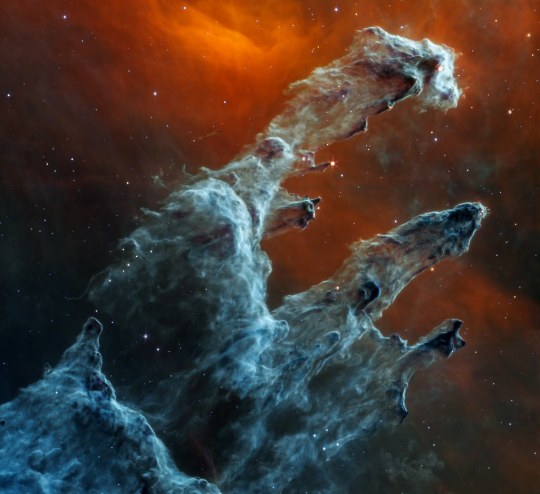
The Pillars of Creation (Webb MIRI Image) by James Webb Space Telescope You can’t escape its clutches — just in time for #Halloween, the Pillars of Creation reach back out like a ghostly hand. (Some chilling perspective: these “fingers” are roughly 5 light-years long!) The eerie landscape is captured this time by the James Webb Space Telescope’s mid-infrared instrument (MIRI). Mid-infrared light specializes in detailing where dust and gas is. Here, the densest areas of dust are the darkest shades of gray, while the red region toward the top is where the dust is diffuse and cooler. Don’t worry, the baby stars seen in Webb’s near-infrared view (released earlier this month) didn’t disappear. They’re just not easy to detect in mid-infrared! Instead, MIRI sees young stars with dusty cloaks — the crimson orbs at the pillars’ fringes — as well as scattered, aging blue stars. Hauntingly beautiful in any light, we can’t help but return to the Pillars of Creation over and over. And each time, we deepen our understanding of this region. With this new MIRI image, astronomers now have higher resolution data in mid-infrared light than ever before. Learn more: www.nasa.gov/feature/goddard/2022/haunting-portrait-nasa-s-webb-reveals-dust-structure-in-pillars-of-creation Credit: NASA, ESA, CSA, STScI [Image description: Three prominent pillars of semi-opaque gas and dust, each in spectral shades of gray-blue, start at the bottom left and reach toward the top right. From left to right, each pillar is consecutively smaller. Together, they appear like a ghostly hand. Towards the top of the leftmost pillar, there is one prominent red star, with tiny spikes at its tip. Lower on this pillar, there are several darker areas of dust that jut out like protrusions, some also with stars that appear as small red dots. The other two pillars are below and to the right of the first pillar. The background of this scene takes on glowing shades of orange-red mixed with black, with the strongest bright orange hues dipping into a V shape at the top center of the image. Scattered throughout the image are a few dozen tiny bright white and blue stars. Larger stars appear like red orbs and are embedded in the pillars.] https://flic.kr/p/2nVLjwR
81 notes
·
View notes
Text
Universe through Crowley's eyes 🌌 (II)
Now that we know Crowley was the angel who created the stars, here's a list of the elements of the universe I think he could've created and why!
• The Ink Spot Nebula/Barnard 086
» Because Aziraphale loves books (and writes, too!)


• Lagoon Nebula/M 008 - NGC 6523/30
» Because they started to trust each other more in the Land of Uz.

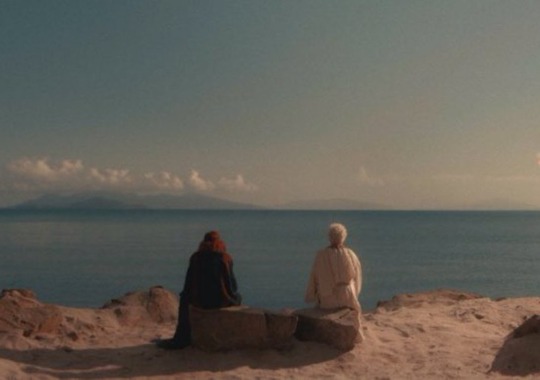
• Oyster Nebula/NGC 1501
» Because Aziraphale tried to tempt him with one as Crowley has never eaten one before.
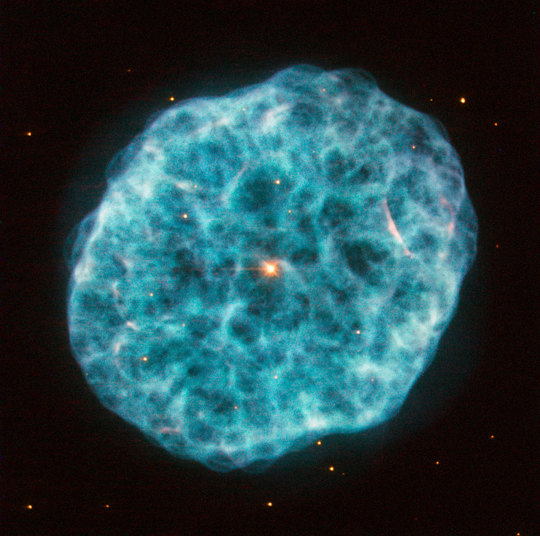

• Pillars of Creation/M 016 - NGC 6611, IC 4703
» Pretty much self explanatory; Crowley helped with the creation of the universe.

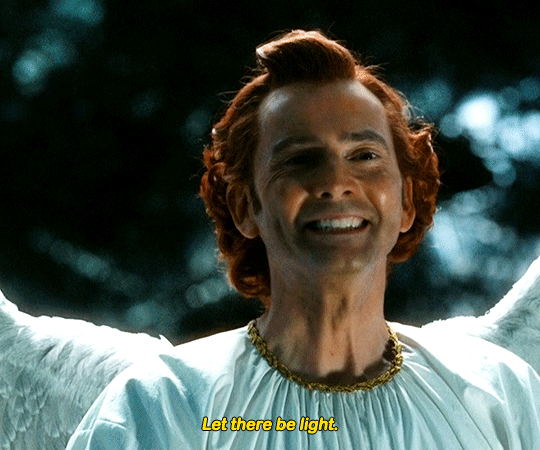
• Ring Nebula/M 57 - NGC 6720.
» Because Aziraphale always wears a ring.


// @neil-gaiman @goodomensonprime //
#aziraphale#good omens#crowley#neil gaiman#aziracrow#david tennant#michael sheen#tv shows#crowley x aziraphale#tv#universe
3 notes
·
View notes
Text
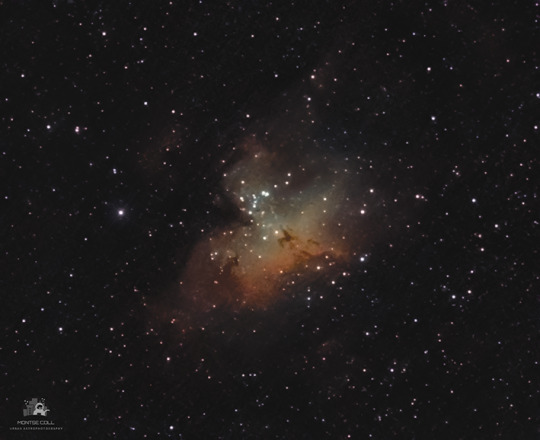
M16, NGC 6611 or The Eagle Nebula with the “Pillars of Creation” region.
Distance to Earth: 7,000 light years
Constellation Serpens
DSLR Canon Rebel T3i
Montcada i Reixac (Bortle 8)
#astrophotography#astro observations#astrophotos#urban astrophotography#astronomy#original photographers#cosmos#universe#messier 16
32 notes
·
View notes
Photo

NASA's Hubble Telescope Reveals Ancient Star Cluster | CeBoz.com
NASA's Hubble captures a mesmerizing view of NGC 6611, a star cluster born five and a half million years ago.
1 note
·
View note
Text
Individuate decine di stelle variabili nell'ammasso aperto NGC 6611
Un frammento di 30′ × 30′ della lastra DSS-1 contenente i campi osservati di NGC 6611.
Utilizzando tre telescopi a terra in Cile, gli astronomi hanno condotto una ricerca di stelle variabili nell’ammasso aperto NGC 6611. Il risultato è stato l’individuazione di 95 variabili, la maggior parte delle quali sono probabilmente membri dell’ammasso.
La scoperta è stata pubblicata in Monthly Notices of…

View On WordPress
0 notes
Video
Eagle Nebula / M16 / NGC 6611 (Extract) by Mark James Ford
Via Flickr:
Eagle Nebula / M16 / NGC 6611 (Extract from full image) H-alpha, S-II narrowband and photometric i’ (700-850nm) filters Taking with the SIGMA fp (monochrome) / SIGMA fp L / Celestron RASA 11" / 10 Micron GM1000 Mount. Total acquisition time ca. 3 hrs, ISO 1600, F2.2, 620mm Registration in AstroPixelProcessor further processing to taste in Photoshop. Full Image: markjamesford.prodibi.com/a/rd6jv5qzrx67079/i/9zjdxw296k4...
#eaglenebula#deepskyobject#deepskyphotography#m16#ngc6611#sigmafpmonochrome#sigmafpl#celestronrasa11#10microngm1000#markjamesford#astrophotography#beautyinallthings#beautyinnature#aweinspiringnature#flickr
0 notes
Text

M-16 Eagle Nebula aka Pillars of Creation North East Part Hubble Telescope 4000x4000
8 notes
·
View notes
Text

The Eagle Nebula, M16 // Sascha Wyss
The Eagle Nebula, seen here in exquisite detail, has also been named the "Star Queen Nebula" by American Astronomer Robert Burnham, Jr.
#astronomy#astrophotography#messier marathon#nebula#emission nebula#star-forming region#eagle nebula#messier#messier 16#M16#NGC 6611#Sh2-49#serpens
146 notes
·
View notes
Photo

M16 [NGC 6611] Eagle Nebula [Kitt Peak Telescope]
#M16#NGC 6611#Eagle Nebula#nasa#stargazing#astrophoto#astrophotography#galaxy#astronomy#universe#space#nebula#spinningblueball#milky way#milky way galaxy#star
297 notes
·
View notes
Photo

From Astronomy Picture Of The Day; June 20, 2018:
Pillars of the Eagle Nebula in Infrared
NASA, ESA, Hubble, HLA; Processing: Lluís Romero
Newborn stars are forming in the Eagle Nebula. Gravitationally contracting in pillars of dense gas and dust, the intense radiation of these newly-formed bright stars is causing surrounding material to boil away. This image, taken with the Hubble Space Telescope in near infrared light, allows the viewer to see through much of the thick dust that makes the pillars opaque in visible light. The giant structures are light years in length and dubbed informally the Pillars of Creation. Associated with the open star cluster M16, the Eagle Nebula lies about 6,500 light years away. The Eagle Nebula is an easy target for small telescopes in a nebula-rich part of the sky toward the split constellation Serpens Cauda (the tail of the snake).
#astronomy#astronomy picture of the day#hubble space telescope#hubble#nebula#emission nebula#h ii region#Eagle Nebula#Messier 16#M16#NGC 6611
16 notes
·
View notes
Photo
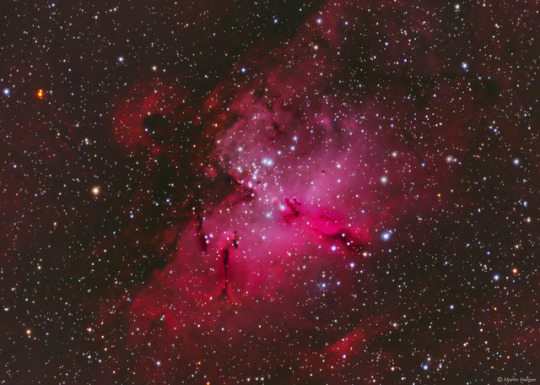


Astrophotography by Martin Heigan on Flickr (1, 2, 3)
#ngc 7000#pelican nebula#cygnus wall#north america nebula#ic 5070#caldwell 20#Eagle Nebula#messier 16#m16#pillars of creation#ngc 6611#star queen nebula#the spire#IC 1396#elephant's trunk nebula#nebulae#nebula#stars#space#astrophotography#original astrophotography#cosmos#universe#nature#mine#glow
688 notes
·
View notes
